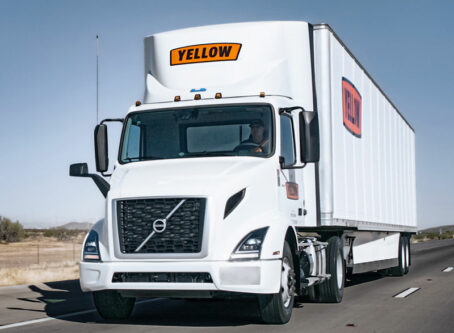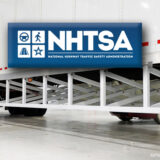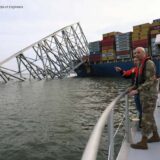Poaching truck freight by rail, water and air
They’re coming to take your freight. Railroads, airlines, and barge operators all are taking shipments from trucking. That’s the way it can seem when you read the transportation press.
Railroads are moving on multiple fronts to put truck freight on the rails. The massive infrastructure bill passed last year aims to put more shipments on barges and other inland water vessels. And then there’s competition in the air – everything from drones to all those passenger planes converted to freight during COVID.
Let’s start with the railroads.
Last year, Norfolk Southern, the fourth largest U.S. railroad, added boxcar service for LTL truck freight – mostly odd-sized or extra heavy shipments. At least some of these shipments probably would have moved as truckloads. This year, CSX, the third largest railroad, bought Quality Carrier, the second-largest tank trucker in North America, and moved to buy a smaller New England railroad. Both would put more truck freight on CSX rails, the company said.
That’s what Martin J. Oberman, chairman of the Surface Transportation Board, likes to hear. Oberman wants more freight on rails and less on highways. So, it’s probably why a CSX representative at a hearing before the board said the railroad will “fight vigorously” to win new business from trucks if CSX takes over the smaller railroad.
Meanwhile, two companies are developing self-propelled electric equipment that can help railroads compete with trucking. Intramotev of St. Louis is developing automated, battery-powered freight cars that can ride the rails singly or in short trains. In Los Angeles, Parallel Systems is working on rolling devices capable of moving intermodal containers on the rails one or a few at a time – no actual railcar needed. Both companies see their products helping rail compete with trucking.
On the water, Transportation Secretary Pete Buttigieg refers to the Marine Highway program intended to move some truckload freight to barges. To that end, the epic bipartisan infrastructure bill that passed last year includes $2.2 billion for inland waterway projects.
“We do think the potential for our waterways to get freight off our roads and reduce emissions is underutilized,” he told a conference in November.
Meanwhile, ports around the country are falling over each other trying to lure container ships from the Southern California ports of Los Angeles and Long Beach. Two of them are on the Great Lakes, in Cleveland and Duluth. That would mean shorter road trips for Midwest containers.
And then there’s airfreight, all those passenger jets refitted to carry freight, and the big new freight aircraft, like the Beluga from Europe’s Airbus. It’s named after a whale for a reason.
How are all these initiatives going to affect the truckload marketplace?
They won’t. Not even close. Even with all these factors, truckload freight is expected to increase in 2022 and beyond.
Then, what about all those reports in the transportation press?
Public relations hype.
The Norfolk Southern boxcar LTL service doesn’t even run on a daily basis and may not work out at all. For its part, CSX may actually put some truck freight on rails. But it will be little and in many cases will consist of linehaul only. Trucks will move loads from shipper to rails and from rails to the consignees.
According to the ATA, truck freight is projected to grow by more than 70% over the next 10 years. Yes, other modes may grow a bit more than that, but primarily because their traditional freight will grow in volume, not because of truck freight they might poach.
In any case, rail is vastly overshadowed by trucking. According to the Federal Railroad Administration, the entire U.S. railroad network, grosses approximately $80 billion a year in revenue. UPS alone brings in more than that – $84.6 billion.
Those new efforts to put individual freight cars and containers on the rails? Transportation commentator Alan Fisher in his YouTube series Armchair Urbanist, called the idea “incredibly stupid.” I’m not so sure about that, but U.S. railroads are moving in the opposite direction, dispatching longer trains. The longer the train, the bigger the profit per railcar. Short of upending the entire U.S. railway system, it is simply not going to happen.
Those Great Lakes ports?
Forget it. Duluth does almost no container business while Cleveland, despite the publicity, at best handles between 5,000 and 10,000 containers a year. The Port of Los Angeles alone handles more than twice that many every day. And let’s not forget that access to the Great Lakes, the St. Lawrence Seaway, shuts down from December to March for the winter.
Barges? A competitor for trucking?
Only for the slowest, cheapest freight – even in containers. Let them have it.
What about airfreight?
True, some passenger planes have been converted to air freight, and new freight aircraft continue to be delivered. But the biggest increase in air traffic has been international rather than domestic. Shippers are trying to get around port congestion, not trucking backups.
Besides, there were an estimated 876 planes in the U.S. commercial aircraft fleet in 2021 according to Statista.com.
What, 876?
There are almost 4 million Class 8 trucks in the U.S. according to the ATA. That’s roughly 4,000 times more big trucks than freight aircraft.
Don’t worry. There’s no threat to truck freight out there. It’s all a matter of proportion. LL









